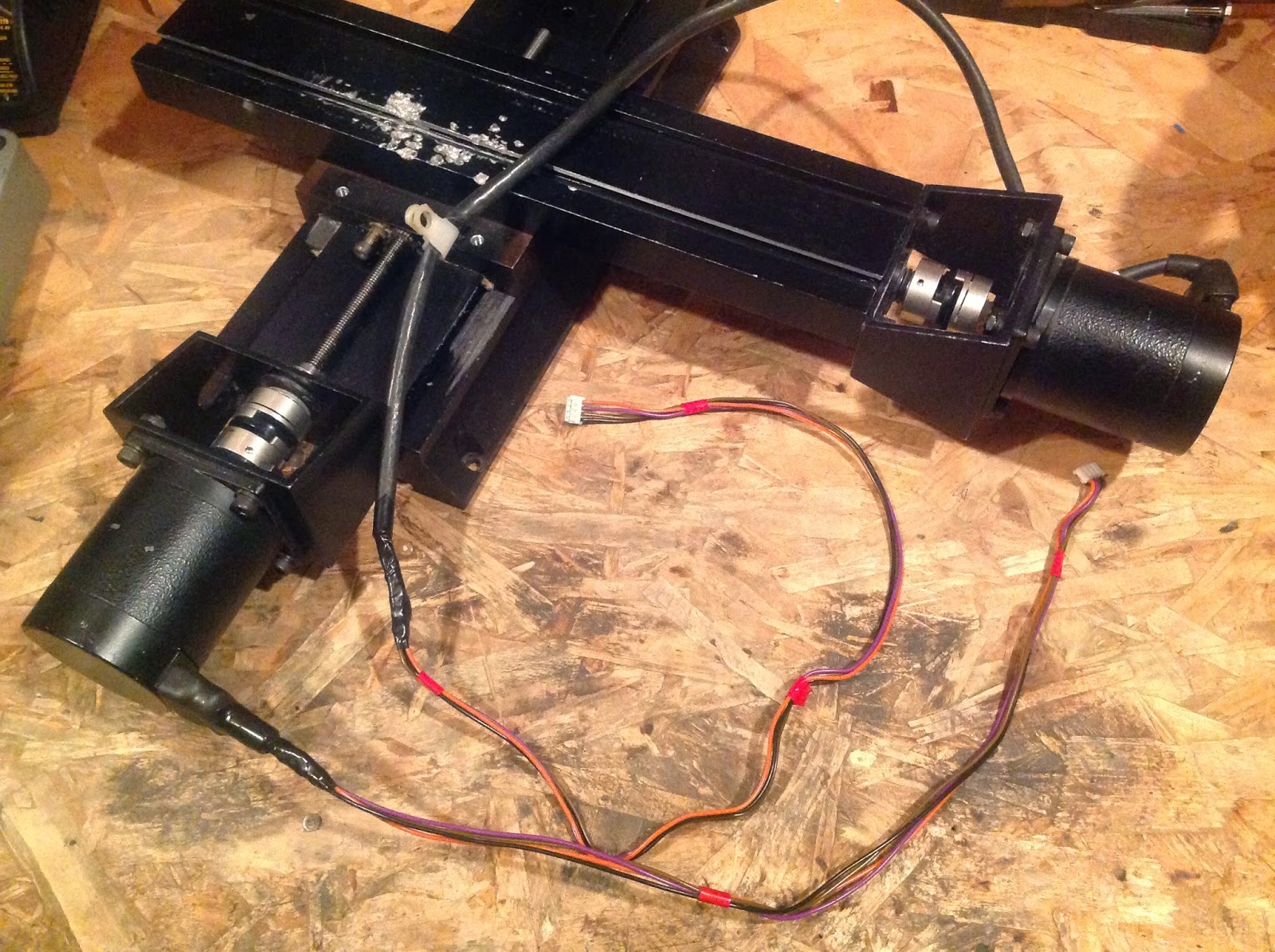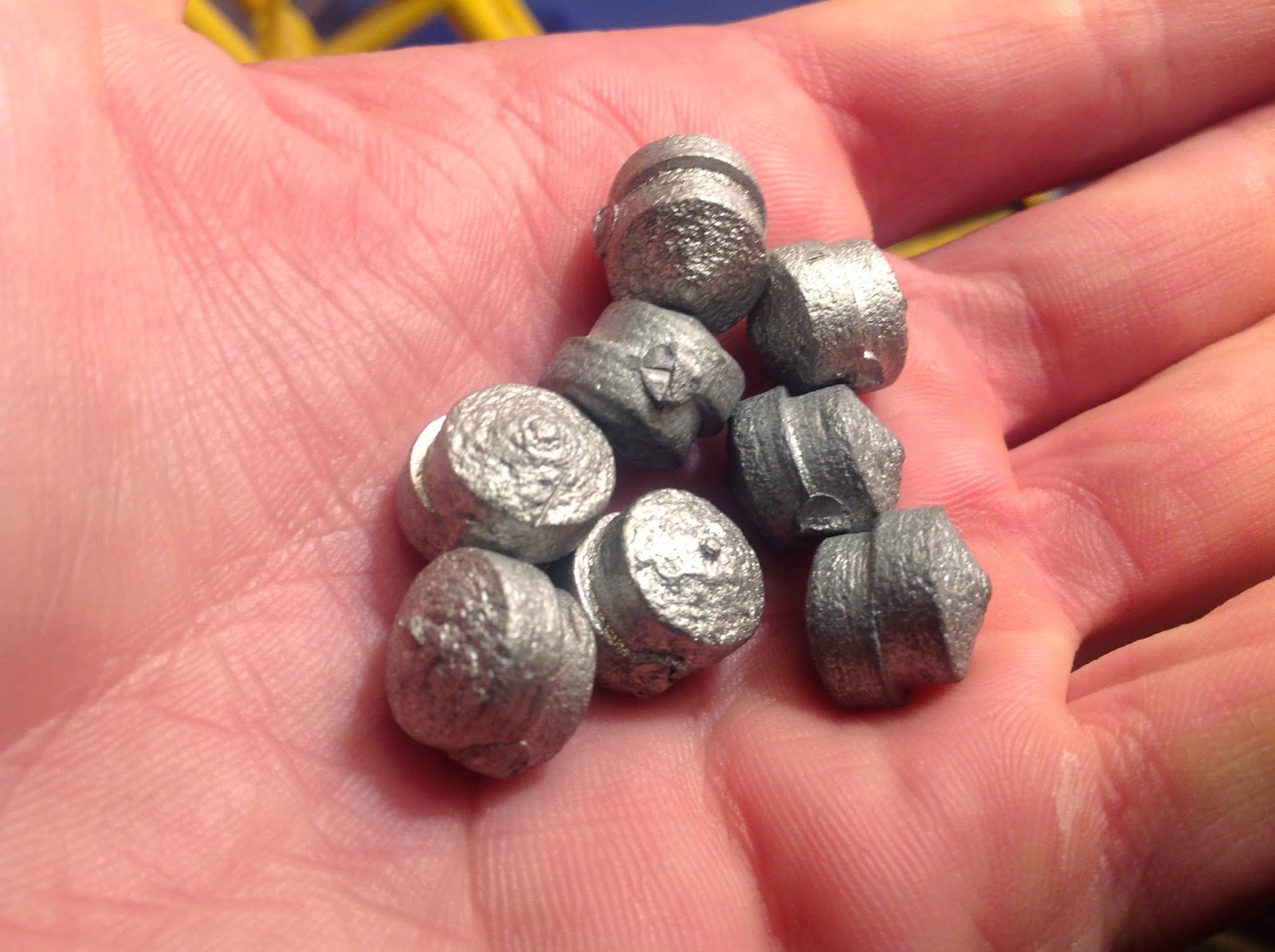So, as it turns out, the previous laser diode was totally dead. That is to say, I really messed up on its soldering, the wires came off, and the stored charge in the capacitor blew it. However, in a record display of resilience, I removed my 3rd diode from its DVD sled and put it in the Aixiz module after removing the dead one. Then, I soldered and tested it and it worked! It can burn! Bwa ha ha ha ha!
Next, I set about figuring out what current I wanted to run the diode at in the long term. I had been using 3.3 ohms of resistance for a set current of 375ma, but I read differing views on whether this was too high for a DVD burner diode. As such, I decided to just try 5 ohms of resistance for a current of 250ma (watch
this video for why the current changed with the resistance) and then see if the burning power was significantly decreased. Using less current, I observed about the same burning power, so I decided to play it safe and go with less current in the long run. If you have seen other LM317 driver circuits, you know that they use a potentiometer to further control the current. I am omitting this, because I really don't see why I would adjust the laser power when it is cutting. Thus, I have set it permanently to be at a good power level.
After that, I planned out how my laser driver circuit would look taken off the breadboard and put on some protoboard stuff I had lying around. I used graph paper for this. I wanted to make it as small as possible in order to conserve protoboard for other projects/lasers and also just because I could. I used this schematic (omitting the reverse voltage diode and potentiometer). As explained in
this post, I also added a transistor to turn the laser on/off. Eventually, I ended up with this tiny circuit:

It is very small! However, I would like to point out that small is not necessarily the way to go, nor is soldering at 7 in the morning. It was somewhat difficult doing the delicate soldering needed to maintain a solder bridge-free circuit. Additionally, since I soldered at 7 in the morning, I neglected to actually solder the positive of the laser output to the rest of the circuit. That is only slightly a big deal. :) I spent a few days saying "Woe is me" etcetera because I couldn't get it to work, no matter what. Thankfully, I was using a test load to test the driver, instead of the real laser diode. This is described
here.
Anyhow, I eventually got the driver to work, and it works beautifully! I never knew my laser had so much power! Maybe the 3.3 ohms of resistance was
worse than the present 5 ohms? Now my laser can easily cut all the way through black craft foam with ease, in one pass. Clean cut, all the way through! Slices like butter. Below is a picture of the foam mincemeat I made while playing with my laser.

As you can see, I thought that the laser deserved a sticker (I got it from HighTechDealz.com free with my order). I am very happy with its destructive power now! :) Also, I actually laser cut the right side off of the sticker, because the sticker content was way off center. Now, my laser cutter has done something useful and shown that it can even cut white paper! Not plain white paper, though - I tried regular printing paper, but it didn't cut it like it did with the sticker.
Next, I will be securing the electronics of this project onto the plywood base and enclosing them in a box with the computer fan on top for cooling. I will also be fixing an annoying issue that sprung up (there always has to be
some problem, doesn't there?) with the X axis where the motor gets to a certain point and then jitters/stalls. I am crossing my fingers for WD40 to do its magic.
Finally, for your viewing pleasure, I have included an iPad video taken of the laser cutter decimating a string of bits of craft foam. Enjoy!


















































